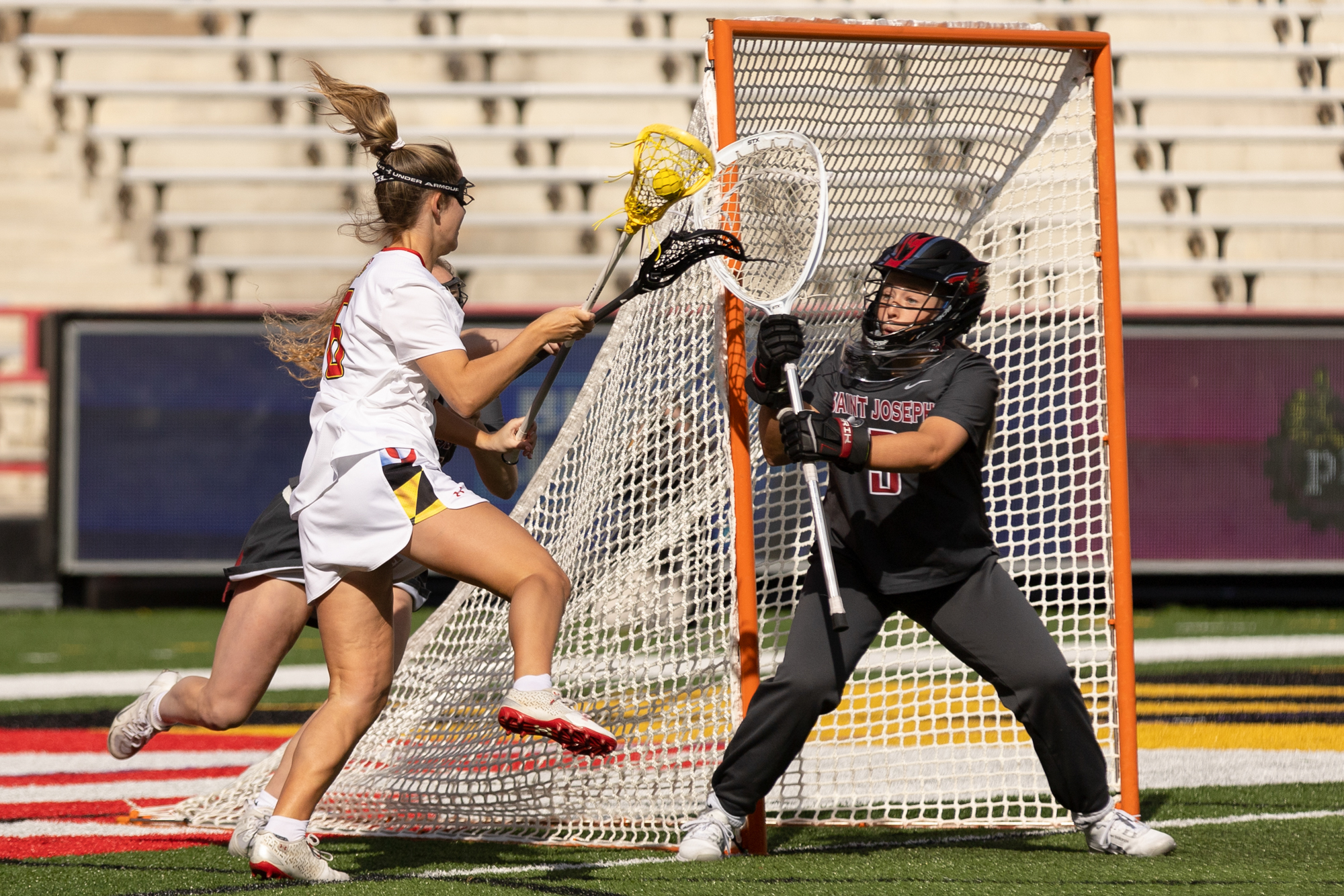Ahead of No. 6 Maryland women’s lacrosse’s matchup at No. 7 Florida Saturday, it was clear that whoever won would be making a statement.
The Terps fell to now-No. 2 Syracuse and Florida lost to No. 1 North Carolina a week prior, so on top of the game being a top 10 matchup, both teams looked to prove they belong among the nation’s best. Right from the opening draw, Maryland was firing on all cylinders.
The first quarter was perhaps Maryland’s best of the season, and despite putrid performances in the second and third — where it scored just once and suffered a 31-minute scoring drought — the Terps squeaked out the win, beating the Gators 14-13 thanks to some fourth quarter heroics.
“We didn’t hesitate, and we never quit,” coach Cathy Reese said. “To come away with seven goals in the first, and six in the fourth [after] that 30 minutes … I think that that shows us what this group can be capable of, and we just need to continue to work to playing a consistent 60 minutes out there.”
[Late flurry pushes No. 6 Maryland women’s lacrosse to 14-13 win over No. 7 Florida]
But Saturday’s matchup wasn’t the only time when the Terps struggled in the middle of the game.
Maryland is just four games into its season but has struggled with mid-game woes in the second and third quarter, particularly offense.
Reese’s squad has outscored opponents 40-24 in the first and fourth quarters this season. In the second and third, the Terps have been outscored by their opponents 23-15 — meaning 72.7 percent of Maryland goals have come in the first and fourth quarters, while the team’s goals allowed are nearly identical.
In Maryland’s season opener against Saint Joseph’s, the goal differential between quarters one and four was equal to that of the second and third quarters, as the Terps notched a scoring differential of five in both. In their other three games, the Terps scored 11 more goals than their opponents in the first and last periods and 13 less than their opponents in the second and third.
[Maryland women’s lacrosse’s attacking stars broke through against Drexel]
Some of that could be attributed to possession, as Maryland won 41 draw controls while opponents won 29 in the first and fourth, while narrowly outdrawing opponents 25 to 22 in the quarters between them. But even when the Terps have had possession, they haven’t capitalized.
The Terps have shot 61.9 percent (26 for 42) in the first quarter, 19.2 percent (5 for 26) in the second, 35.7 percent (10 for 28) in the third and 50 percent (14 for 28) in the fourth this season.
The efficiencies per period in the Florida game — Maryland shot 72.2 percent (13 for 18) but just nine percent (1 for 11) in the second and third — may be the most astounding.
The Terps will hope to not make their mid-game lulls a common occurrence.
“We did great [in the] first quarter, and then we didn’t have a very good second quarter. That unfortunately is what happened to us last game too, so this needs to not become a habit,” Reese said on Feb. 21 following a 15-9 victory over Drexel. “And we need to change that and make sure that we can kind of keep our foot on the gas every opportunity that we have to play.”



